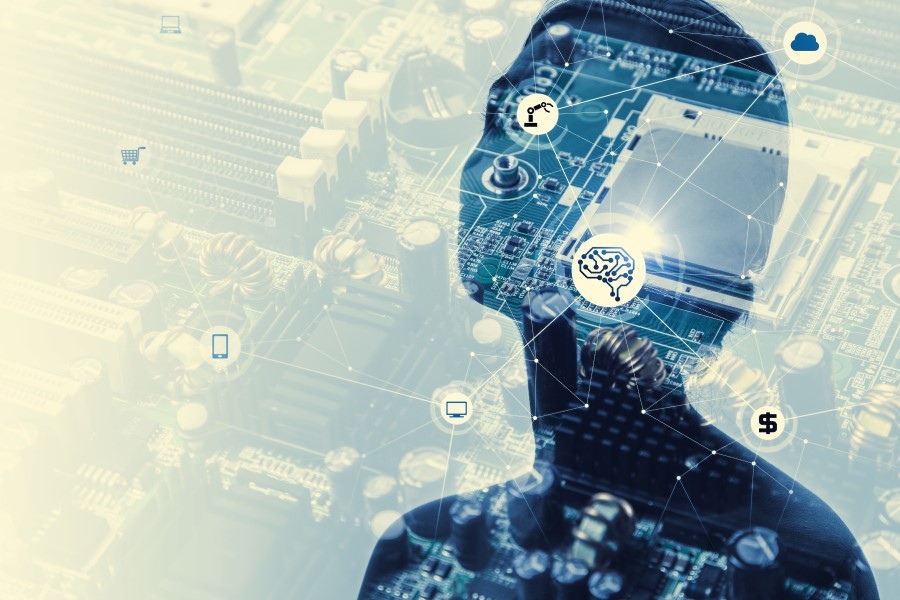With peak smartphone and computer sales already behind us, the semiconductor market is now being boosted by the IoT and empowered by the IIoT to provide increasingly rugged, innovatively bundled semiconductor chips and smart sensors. Now that ubiquitous computing is the norm, connectivity is driving demand, and semiconductors will continue to make enhanced connectivity possible.
As the IoT and microchips evolve in tandem, we’re seeing double-digit growth in the semiconductor market. In 2017 it was worth $420 billion, up 21% from the year before. New IoT chip opportunities will be worth $400 billion by 2020, according to PWC.
By 2020 nearly 5 billion internet ‘accessible and aware’ devices will have been sold. Healthcare monitoring and human-computer interfaces (smart glasses, smart watches, VR headsets) grew from a US$15 million market in 2013 to US$7 billion in 2019. The brain computer interface (BCI) segment alone was expected to grow at a CAGR of 11.5% between 2015 and 2020 to reach US$1.72 billion.
With more neuroprosthetic conditions becoming treatable (think cochlear, sensation, and movement-enabling implants, artificial retinas, and implants that can stimulate brain cell growth and synapsis), more conditions requiring treatment as the global population continues to age, and advances in communication technology development, BCI market growth is easy to understand. Add increased virtual gaming, home control systems, and increasingly sophisticated military communication demand, and it’s easy to see why the market is growing so quickly.
Another huge factor in semiconductor growth is the increasing usefulness and application sophistication of sensors, many of which have IIoT rather than IoT applications. The sensor sector outpaces all others by more than 30%. CAGR between 2014 and 2019 was estimated at 42% by PWC in a 2015 white paper. Advances in sensor technology and a reduction in the average selling price will keep growth figures well above the other semiconductor sectors for the foreseeable future.
No longer focused primarily on motion and image sensing, sensors now monitor humidity, altitude, and vibration. In the human-facing market, sensors can also now monitor food calorie composition and record human health indicators including blood pressure, heart rate, and glucose levels.
The IIoT, with applications throughout the automotive, medical, fabrication and manufacturing industries leverages “always on” connectivity and big data. The ability to use sensors to collect data for actuarial purposes benefits the insurance industry. Whether the cars are smart and driverless or merely equipped with the latest driver-assist connected technology, the automotive market is an increasingly huge consumer of sensors. The LED lighting sector, security and energy management, drug and monitoring devices, drug delivery devices, parts servicing, automatic lights, temperature control, and security systems are heavily dependent on the latest sensor tech.
Sophisticated sensors are also helping streamline and automate the supply chain. By tracking assets, staff, stock, and shipments, and by providing predictive maintenance, testing, and quality control, sensors allow for better forecasting and more seamless real-time connectivity between assets and end users.
With automated vehicles helping humans to offload and move products more safely and efficiently, there’ll be more and more human-robot collaboration throughout the supply chain. Sensors that track temperature, vibration, and impact, and telematics that calculate estimated time of arrival with more certainty make the supply chain more efficient and more agile. Real-time inventory information is always available. Automated connectivity between inventory providers, warehouses, shippers and customers and automated order-picking processes based on real-time needs are now being implemented wherever feasible to cut costs and optimize efficiency.
Sensor growth is driven by innovations and IoT demand. The trend to include more features on a single chip will continue and there will be increased demand for customization of chip application features. So, the challenge for the semiconductor industry is to continue to evolve to ensure demand is met.

